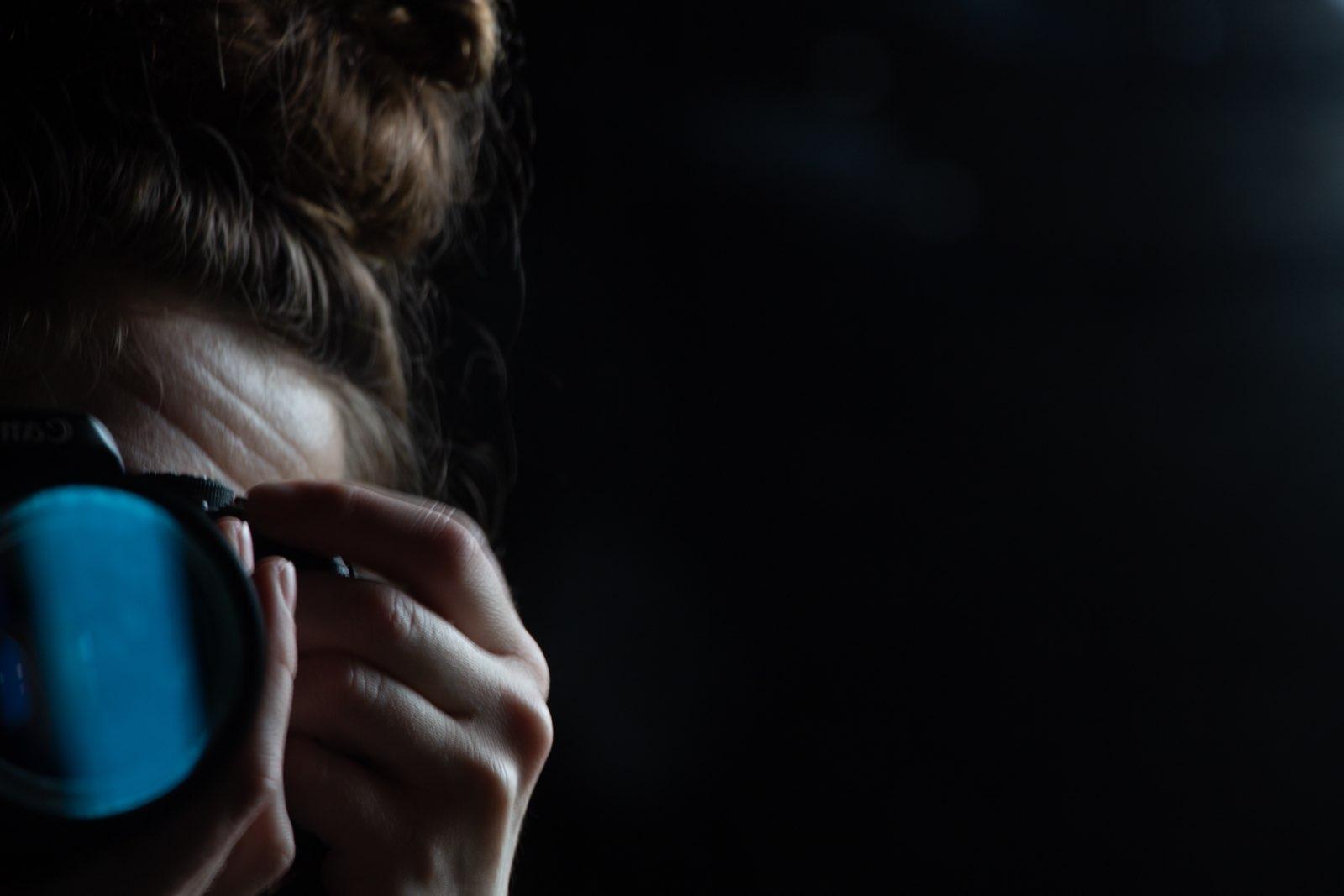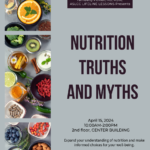
The Denali is the creative arts magazine of LCC.
The Denali is Lane Community College’s hotspot for artists. There is a theme which is chosen each and every term. The newest theme starting this term is “Possibility” so what can students expect? What kinds of things can students publish? What kind of things has The Denali published in the past? To answer this question we sat down with Katelynn Burnett, the current Editor-in-Chief. To get a better understanding from its past, present and future.
The Past
When and why did The Denali start?
The Denali started over 50 years ago as a publication for artists from Lane County. Eventually, it was picked up by the school and became more student-focused.
How long have you been leading The Denali?
I’ve been leading The Denali for two terms now. Before that I volunteered as a staff member for a year. Then when Lane, our last editor-in-chief, left, I applied and got the position. We currently have a staff of three with us right now.
How has your experience been leading The Denali?
I honestly had no idea how much Lane really did. Sometimes it’s knowing what order you do things and not overthinking. I am new to leadership as well. It’s the first time that I’ve ever led a team, especially in any kind of like, really official way. It’s something that’s about just a really simple group or activity or something like that, or like a class activity. The job comes with different difficulties to overcome. How to delegate, knowing howto communicate with other people. Generally it’s just learning how to be a good leader.
Can you tell me about The Denali’s last theme? What were your personal favorites from last term?.
Last term was “Decomposition,” and my favorite series that we published was by Emily Cramer. It was an untitled series, but it was a series that she did in Pennsylvania that was a bunch of Volkswagen bugs. The cars were littered all over the town that she stayed in all through the woods. Just I have no idea. She didn’t have any idea why they were there. She had taken a bunch of photos of them and they were all oriented lengthwise rather than horizontally, which I kind of like seeing because of the new age, sort of leans toward social media and things like that. How important that orientation can be for things like Instagram, TikTok, but really, really beautiful series and all these old Volkswagen bugs that were different in different parts of decomposition from being left in the woods, in the forest. I think we think of cars and machinery as a really tough and gritty thing. You don’t think of that as something that breaks down. So I thought that was a really interesting series to do for decomposition that really put into perspective the power of nature.
What were some of your favorite past themes of The Denali?
If I had to pick a favorite it probably would have been when we did the COPE theme, that was during the pandemic. And a lot of people submitted art for that. We did a lot of canvassing and outreach to get submissions. Our team was really, really solid, I heard, and it was really needed at the time. Like people really responded well to the theme because it seemed like we really had a lot to cope with during that. You know, everyone was really going through it during the pandemic and we even got to do a 30-minute interview. The interview was with Bob Devine, who is a HCC professor, as well as a fine artist who did a series called Maps and Hieroglyphs, which he ended up renaming. It was just on display last term in the Arts Building, Building 11. It was one of the galleries that they did, but it was renamed when he did it in the gallery. It’s not some hieroglyphs on the website, but it’s an incredible investigative series that he did to cope with his own, you know, issues and things that he was overcoming during that time as well. So he reached out to us and we had the opportunity to do that. And that tied in really amazingly with all of the student work.
The present
Can you tell me about The Denali’s current theme Possibility? What does it mean to you personally?
We wanted to choose something that was both broad enough to incorporate, having more freedom in their creation whilst still having it run. The last thing that we did was decomposition, which also is very, very beautiful and although we only had a small couple of handfuls of submitters, it was a really potent work and I really appreciated having the opportunity to release that publication. So the process of decomposition naturally leads back into life. And what is life but most possibility? So that was the conceptual idea of Stephanie Whalen — one of my constituents. I wanted to do something that could come after decomposition. And all I was really coming up with was just fungus, mushrooms. You know, after things decompose, they turn, they turn in and they turn into mushrooms and mold, I guess. But she was able to kind of abstract that into, well, what you know, what it really is, is a process of something ending and then becoming anything else that that, you know, that that matter can really become. So that’s where we came up with possibility.

When it comes to things that are allowed to be published, like you’ve mentioned art and stories. Is there wiggle room for anything? Specifically for things that haven’t been listed?
Yeah, there’s a lot of things listed and there is a ton of room. The way that we sort of see it is that what somebody considers art, you know, that can always be an individual interpretation as long as you can capture that in a way that we can put it on the website. Then it could definitely be considered and that could be a picture of a sculpture, would be a picture of the going to be an animation that could be a song or a music video. It could be a short film. You know, we have specifications in terms of length, like for example, literature can only be 2000 words.
How can people get in touch with you to volunteer at The Denali?
You can email me at denali@lanecc.edu and find us at our website https://denali.lanecc.edu/ or you can come to the Center Building second floor. Mondays, 9 to 1. Tuesdays and Thursdays, 12 to 2. That’s currently where I’m meeting because, like I was mentioning, we don’t have a presence and I’ll be tabling up there this term so I can be found there and people can come and talk to me directly. I can get the contact information and get them onboarded onto the team and, you know, see what contributions they have to make and what kind of awesome, awesome stuff that they can can help us achieve.
How will The Denali pick its next theme?
I would love to see us have a team of volunteers who are passionate enough about The Denali that those volunteers are excited to decide what the next theme is. I would rather for the next, you know, however many terms which I believe are going to be two or three tours for the rest of the time that I’m the editor of The Denali, I would rather have other people show that same passion and tell me what they want to see the theme be and somebody make that case. That would be the theme that I would be the most excited to do.
What kinds of things can students kind of expect working for The Denali?
We need help with graphic design, web design, and community outreach. We meet, like I said, several times a week. We have a lot of discussions about what we want to do and where we want to put our efforts. So especially, you know, somebody that has the time and dedication and desire to put the effort in to see some kind of a new project come to light. We are more than willing to work on new projects, but even just with what we already have to, take care of everything from calling for art, which looks like community outreach. Graphic design, journalism. There are a lot of different aspects that go into creating an advertisement and getting something out into a community of people. A collaborative group project work, you know, in terms of kind of similar to like what you might see in your final projects and some of the classes and things like that. We kind of all work together and see which different pieces we can bring together to create new interviews, create new opportunities and new. Content four for the website
What are some uncommon pieces that you haven’t seen too much, little gems you would like to see more of in submissions?
I would love to see more poetry, specifically recorded poetry. I would love to see more spoken word poetry. I love seeing when people use their voice to get their art out. I would love to see more music submitted. I don’t think that people necessarily think of music as something that needs to be published, but that’s still a resumé builder just because it’s not like the language or the particular industry standard doesn’t mean that it’s not a good experience or a great place to put your work. You’re able to have that little star, attached to your diploma or your program, whatever it is that you’re working on. And people that aren’t just in the music department make music as well, you know? That’s in the realm of audio, whether that’s telling a story, you know, speaking a poem, playing a song, singing a song, whatever it is. I would love to see more audio submissions and generally more multimedia submissions that are time based like animations, videos, things of that nature.
What are some of the future struggles you can see The Denali may face in the future, and how would you go around combating it?
Mostly, like I said, we need more. We need more volunteers. We need other people who see the potential and want to put that time in and have the time to put in. And the best way I can combat that is, I guess, just by working as hard as I can. Tell other people the good news of the good of The Denali, which has pretty much been like what I’ve been parroting for the last year plus anyway. So I feel like anyone that’s been around me for longer than two minutes is surprised to hear me say that. But the biggest struggle, I think, would be having enough volunteers to be able to accomplish what the potential of The Denali is. Overcoming that just looks ard. Hard work for me and my whole team.
Final thoughts?
I think that the future of it all is very bright and the possibilities in the future. And I’m looking forward to being a part of those and leading a vibrant and excited team of young students to come to greater heights, to greater possibilities, to greater greatness.

